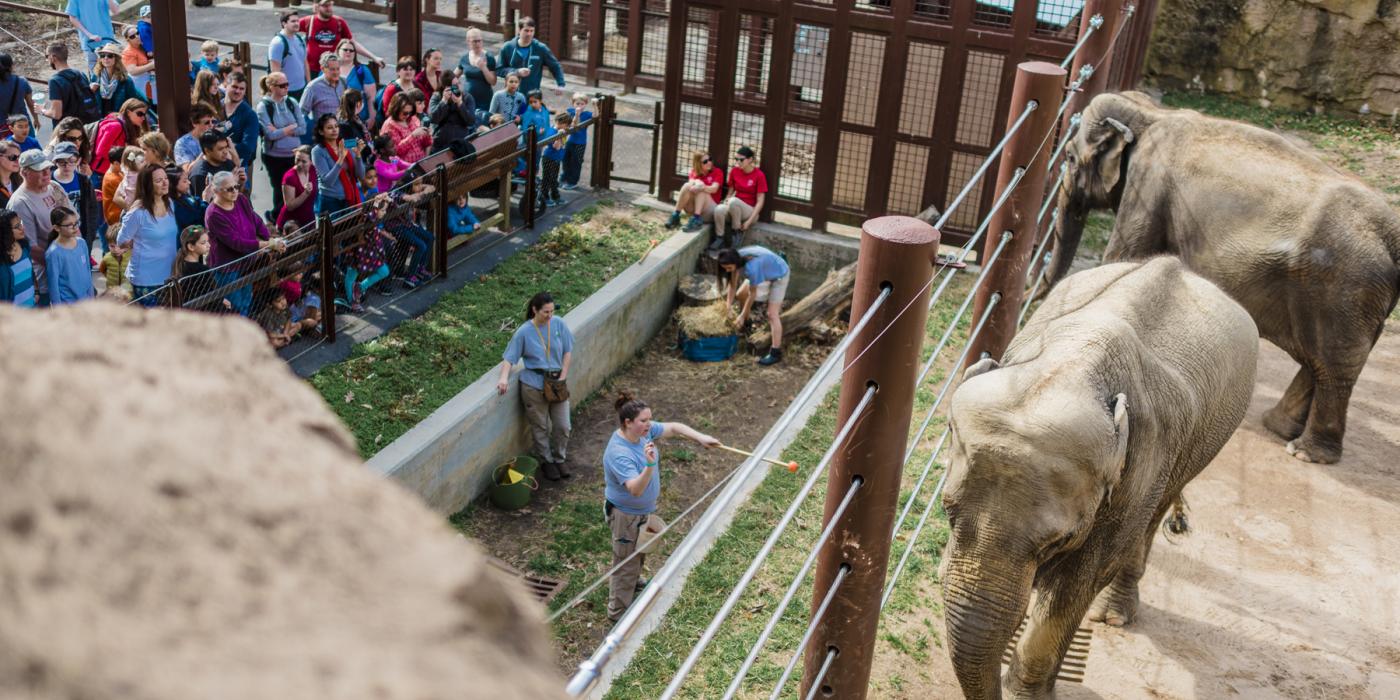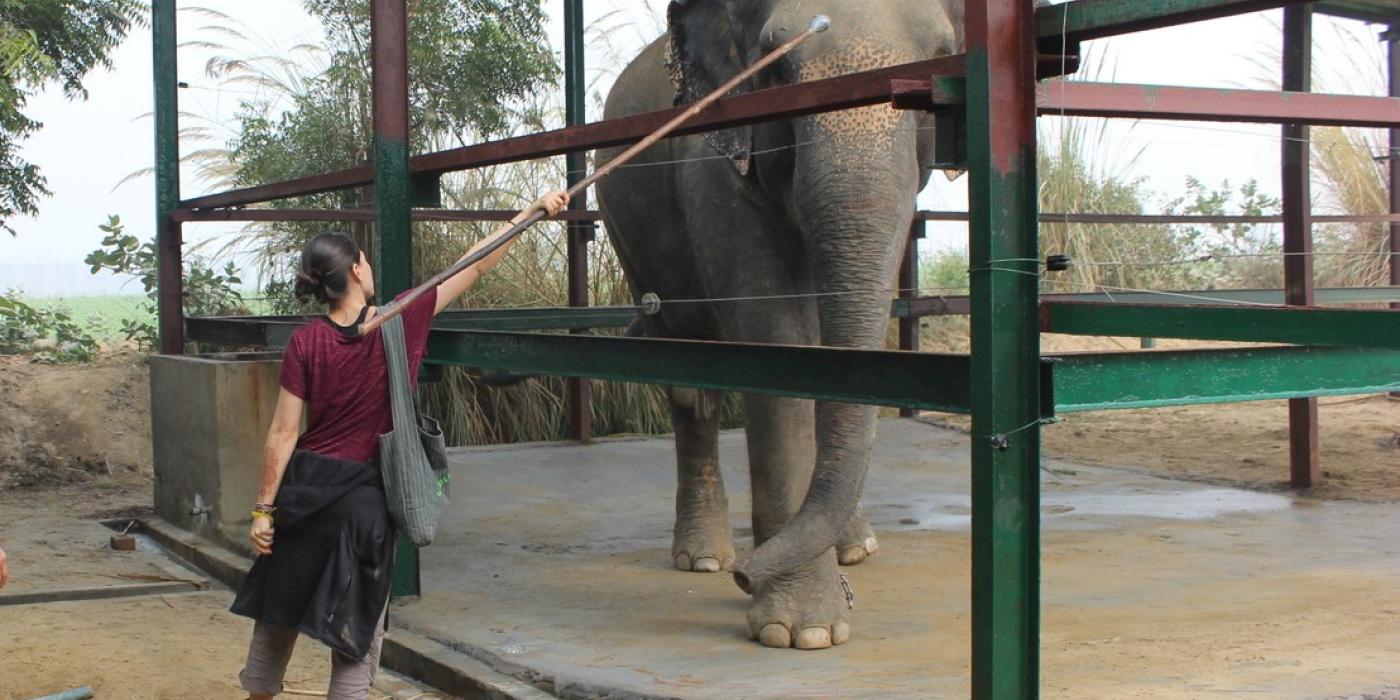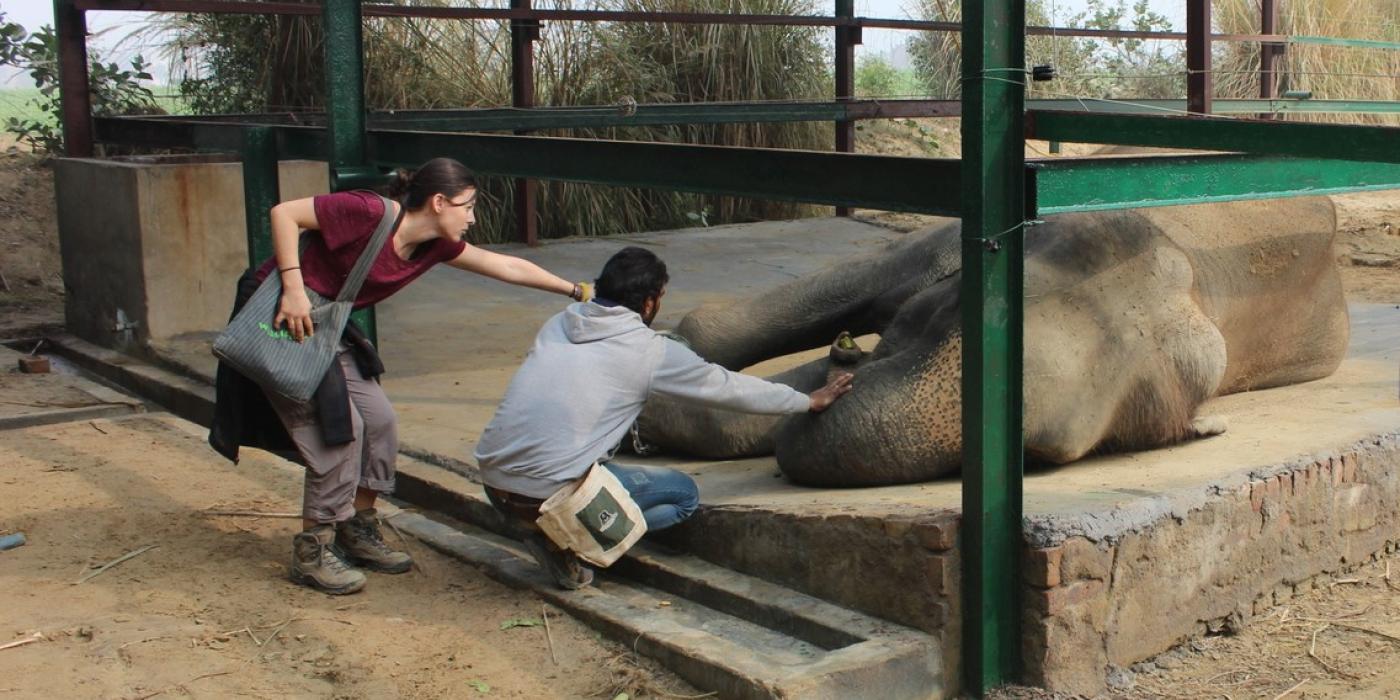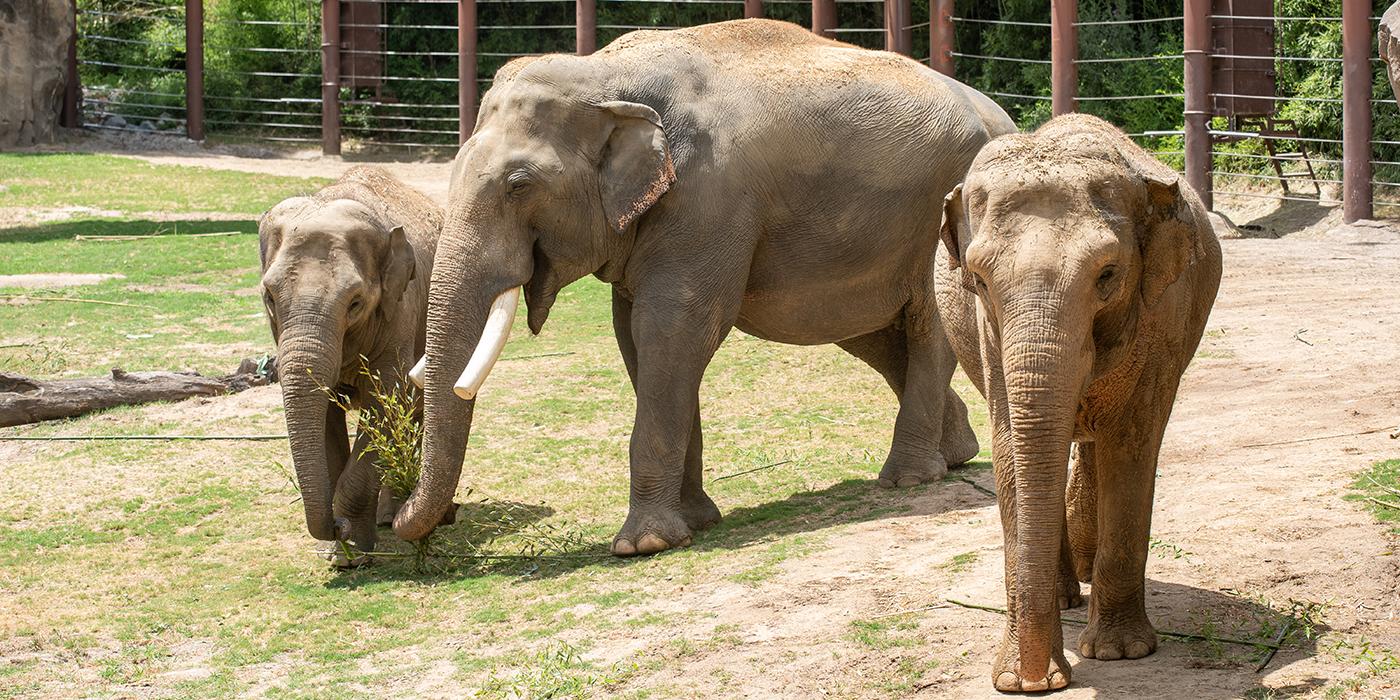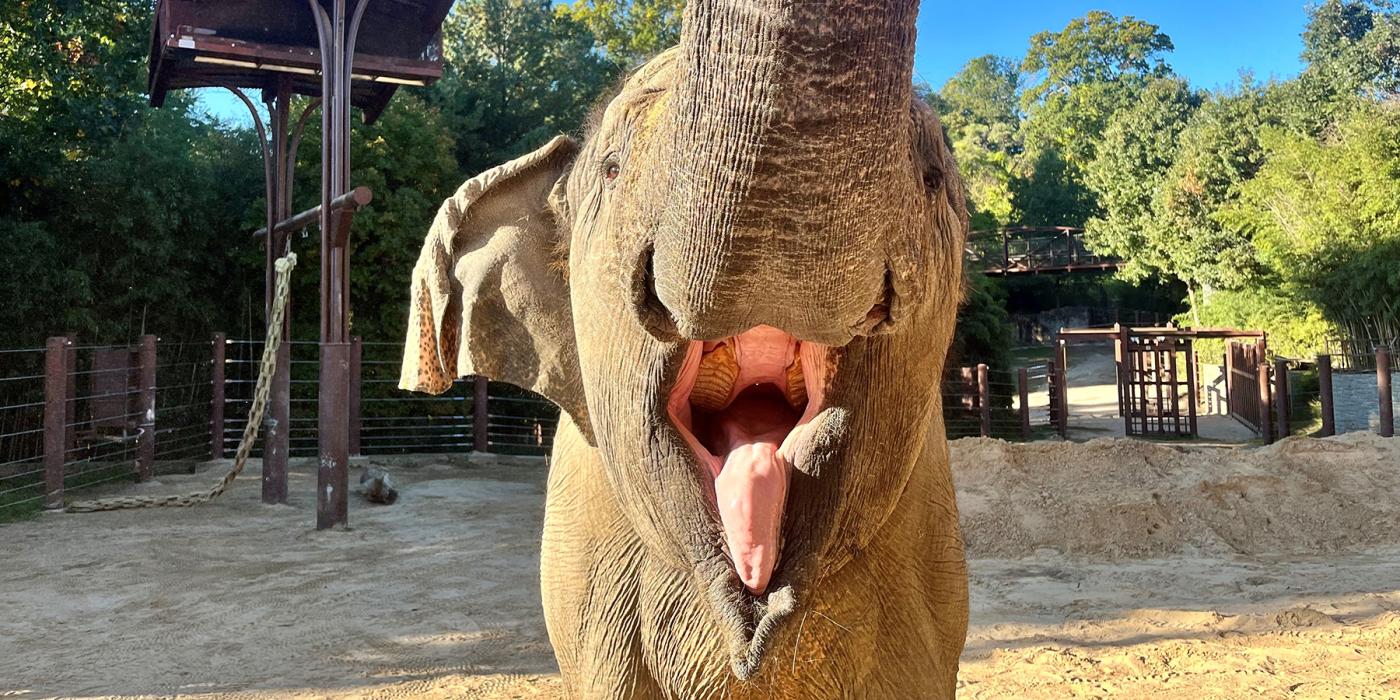Earth Optimism: Sharing Animal Care Knowledge Around the Globe
The Smithsonian’s National Zoo’s keepers are making their mark and sharing their animal care and husbandry expertise around the globe. Last November, elephant keeper Kayleigh Sullivan spent 10 days at Wildlife SOS's Elephant Conservation and Care Center in Agra, India teaching caretakers—called Mahouts—how to interact with and train elephants through a safety barrier, a practice known as “protected contact.”
Since its opening in 2010, the Center has taken in many adult male and female elephants that were previously in circuses, temples, tourist attractions or used as begging elephants. One such elephant now in the care of Wildlife SOS, a female named Laxmi, was discovered begging outside a temple where people would feed her fried fast food. Over time, she packed on the pounds—10,939 of them (female Asian elephants typically weigh between 6,500 and 9,000 pounds). Since arriving at the Center, a modified and nutrition-fueled diet has helped Laxmi slim down to a sizeable 9,500 pounds.
Alongside four elephant management experts from Utah’s Hogle Zoo, San Diego Zoo and Oklahoma City Zoo, Sullivan taught the Mahouts how to examine and care for three bull elephants. Wielding a target pole with a bright orange ball at the tip and a feed bag full of tasty and nutritious foods, the Mahouts learned husbandry cues that signaled the elephants to move toward the target, open their mouths, lay down, show the pads of their feet (for maintenance foot care) and present their ears. When an elephant performed the corresponding behavior, the Mahouts rewarded them with peanuts—a favorite treat. For medical procedure behaviors that were more complicated, such as blood draws, elephants received watermelons, what Sullivan terms a “jackpot” reward. In a recent call with the Wildlife SOS team, she learned that a male—who was very wary of people approaching him from behind, initially—voluntarily laid down and presented his ear for a blood draw. Their recent success shows that when it comes to training elephants, collaboration, persistence and patience pays off!
Related Species:

